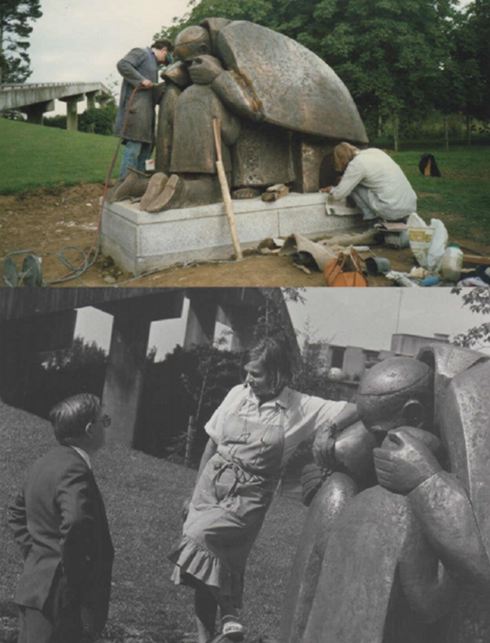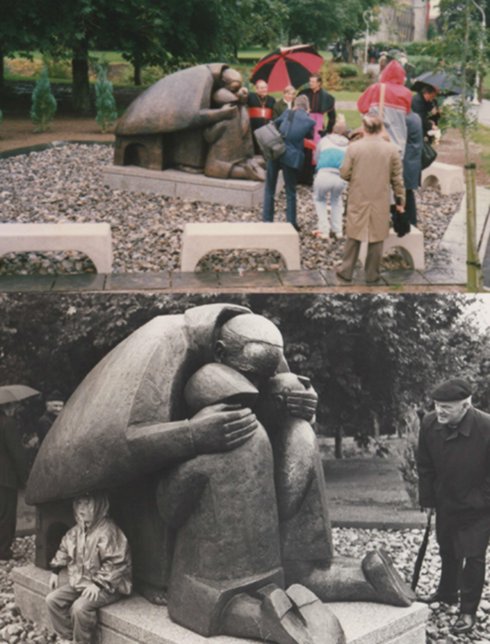"The statue of Pope John Paul II was inspired by a photograph taken during the Pope’s visit to Ireland in 1979. At one of the Papal Masses, a boy and girl knelt before him to present their gifts. He reached out his arms and drew the children towards himself. The scene made a deep impression on me.
"In 1983, Cardinal Tomás Ó Fiaich visited my studio and was moved by a six inch high small bronze that I had made to capture the scene. He encouraged Maynooth College to commission me to build a large version for the opening of their new library, named in honour of Pope John Paul II.
"My first step was to draw two full size sketches of the group, one showing it from the side, the other from the front. These sketches were six feet high. I brought them to Maynooth and set them up on the proposed site in front of the library to judge their effect."
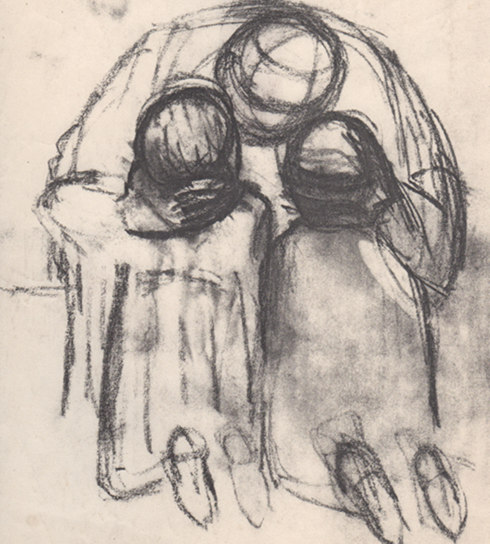
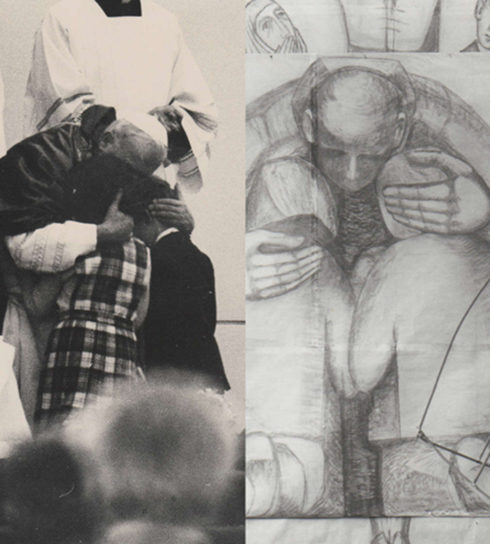
"The next step was to make a maquette - a one foot high clay model of the group. It was based on the original small group but with some interesting differences. The original group showed the Pope seated comfortably with his arms around the children. The three figures formed an almost spherical composition, creating an atmosphere of security and stability. The new maquette was more elongated and showed the Pope leaning forward in a way that conveys a certain tension and strain.
"I think it reflected a change in the Pope’s attitude as I saw it over the years. He used to be more happy, more contained. At the time, I felt there was a greater anxiety there, a greater worry about the world and especially about the young people of the world. I could see it in his photographs and it came out in the sculpture."
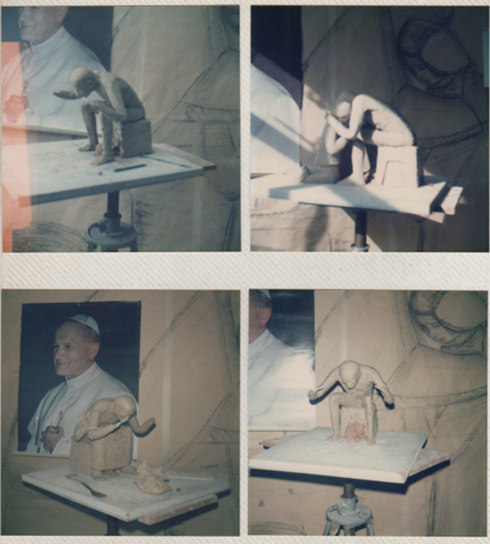
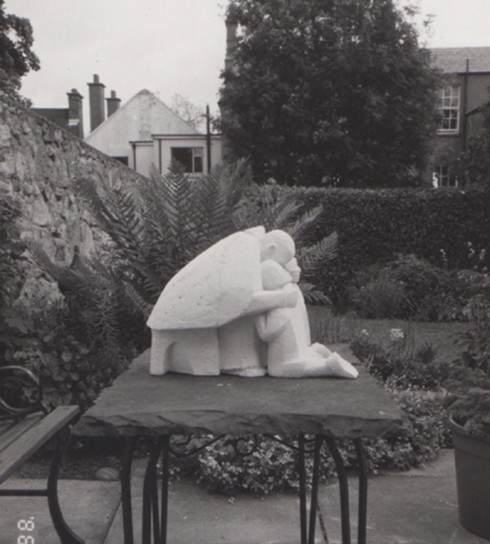
"This was the hardest part of the work. A steelworker was employed to make an armature - a steel framework to act as a kind of skeleton for the full-sized group. Using this armature, myself and an assistant spent nine months building up the complete sculpture in plaster
"This was the largest bronze I had ever worked on. I worked every day, a lot of the time at the top of a ladder. My studio wasn’t big enough to allow me to stand back and see the group as a whole so I never had an overall view of the piece. I had to trust my instinct.
"At times I did things I thought were beyond me. An accident had left me with a loss of feeling in my right hand, so I often experienced a lot of pain as I worked. Sometimes in the morning I would wonder what I had even done the previous day - it was as if someone else had taken over and was doing the work for me. I know I wanted the work to be perfectly executed. As the bronze is cast from the plaster, any defect in the work at this stage would show up in the finished sculpture.
"I wanted the sculpture surface to be as smooth as that of the maquette, so that the children could touch and feel it, making it comforting and reassuring to all the senses. I wanted blind people to see the group - that is, to feel it, to see it with their hands."
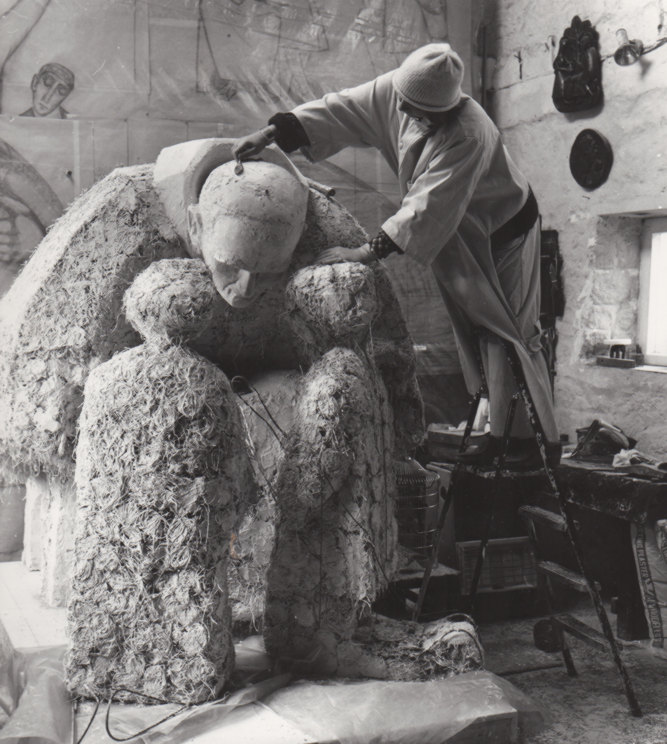
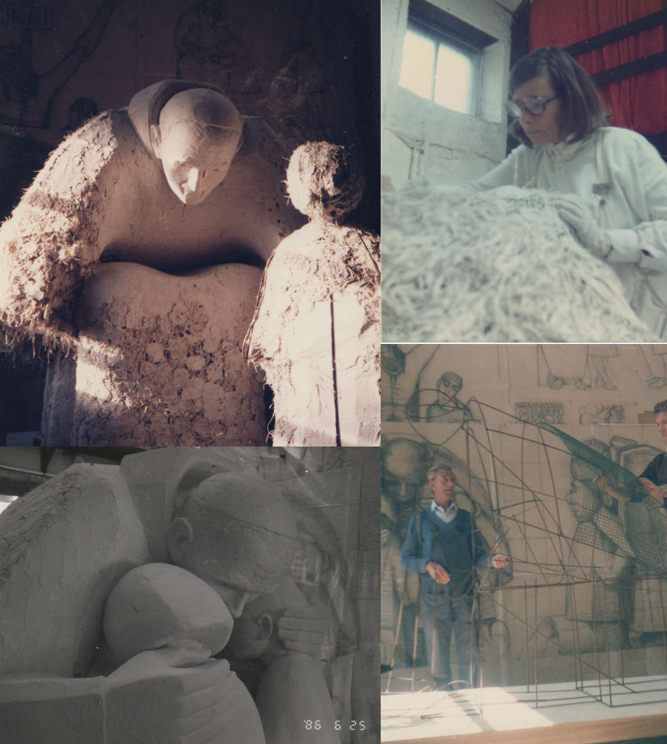
"Somebody said the Pope’s elongated chasuble looked like a tortoise. I’m glad about this. In Hindu mythology the tortoise is the bridge between heaven and earth. That is what the Pope is. In fact, the word Pontiff literally means bridge-builder. I didn’t intend that symbolism but sometimes symbolism happens where you least expect it."
"Another detail that has been remarked on is the fact that the Pope is bare-footed. I often depict my figures with bare feet. I like a good foot. One of my earliest sculpture’s was of my professor’s (Otto Hitzberger) foot. But there is also an intentional, symbolic meaning. We associate bare feet with apostles and pilgrims and the Pope is both apostle and pilgrim.
"It is hard to see the detailed faces of the children who he embraces. But you can see them if you put your head between their heads, or if you hold a mirror right in. But even if nobody saw them, I would still want their faces to be as perfect as I can make them. There was an old German artist who painted a picture so high up in a church that no-one could see it. When they asked him why he did it, he said, “God sees it”.
"It is not easy to say how I got involved in religious art. It was, and still is, a steady development over the years. It started in my childhood and continued to develop in my apprenticeship. I was taught to make my own designs, guided by a great artist and teacher. My early works were rooted in tradition but in a new expressionistic, twentieth-century style. When the sun was shining, the Professor would take me in his rickety car to see churches, cloisters, statues and altars, which are so abundant in the Alps."
"My inspiration comes intuitively and often I feel like a sleepwalker guided by some outside force. Picasso said about his work: ‘I don’t search, I find’ - with which I fully agree."
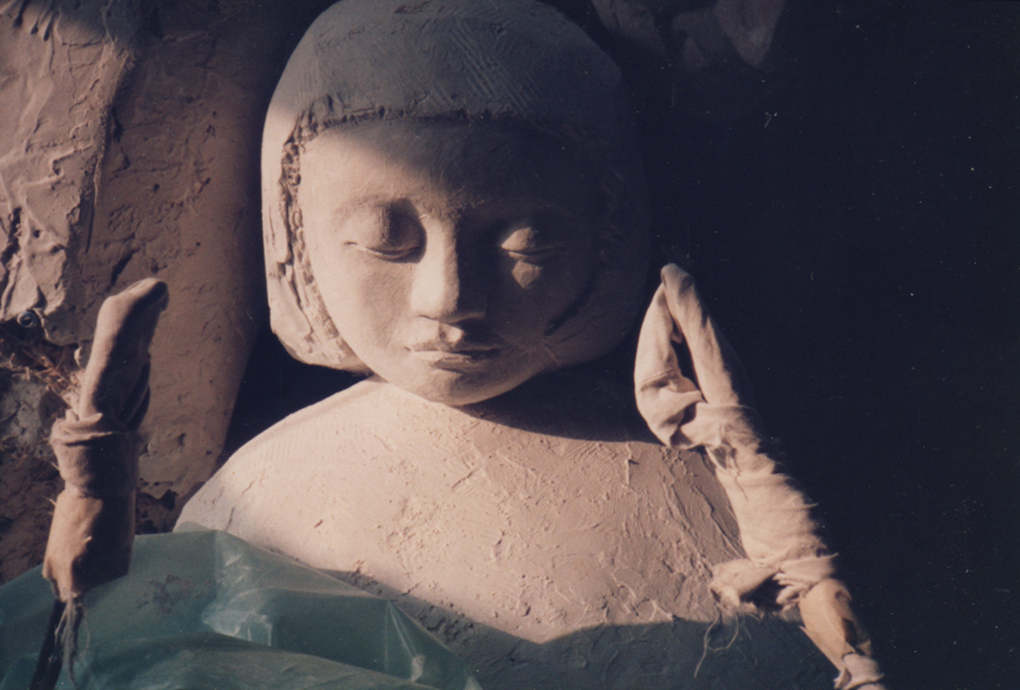
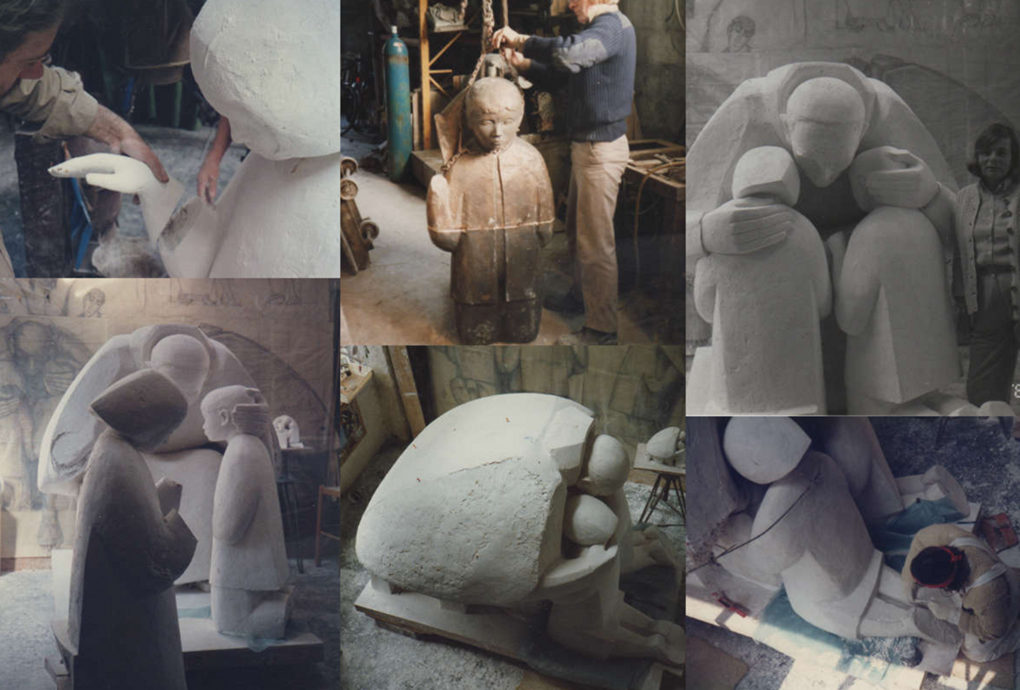
"I work very fast on a commission, it’s the only thing I do fast. Otherwise I’m slow in everything, slow dressing, slow cooking. I really enjoy working, as a kind of therapy."
"When the plaster group was finished, it was cut up into sections and taken to the Dublin Art Foundry to be cast in bronze. The bronze sections then had to be tacked and welded together, and the seams ground and textured until the joins could no longer be seen.
"I just love beauty. I don’t think I’m influenced by it, but my heart goes out to Baroque and painters like Tiepolo. I don’t quite know how it ties in with my work, anything sort of joyful, elated, not quite earthy. Perhaps even a bit dreamlike. Happy, uncomplicated...this beautiful tie of music and sculpture and painting. I love the classics in any form."
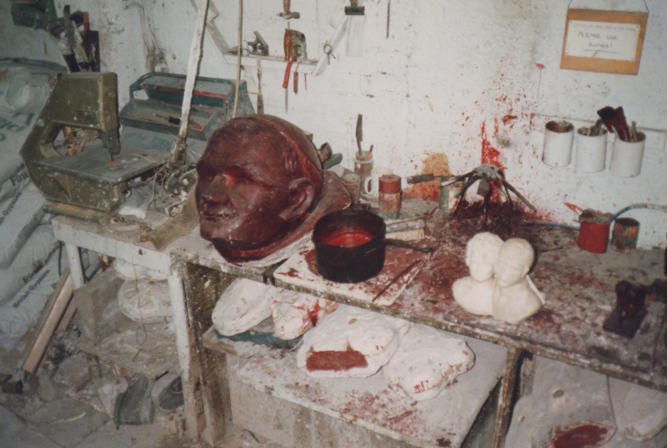
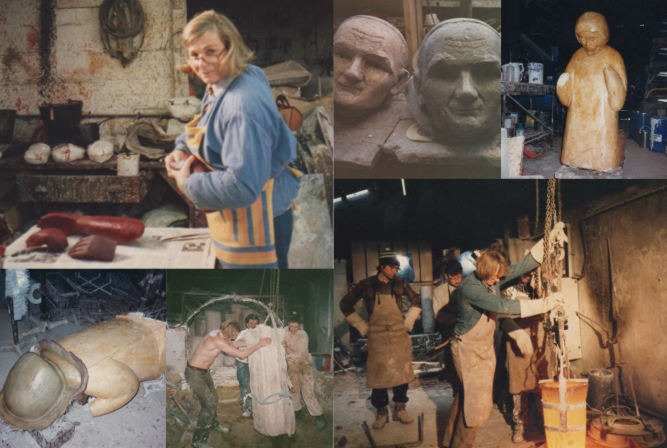
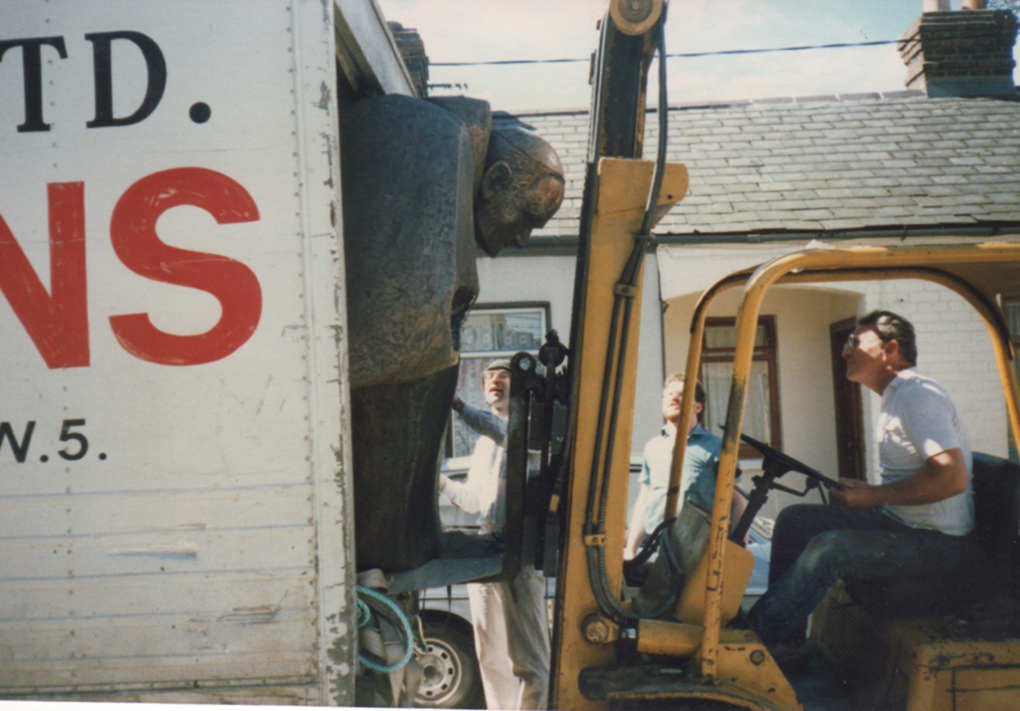
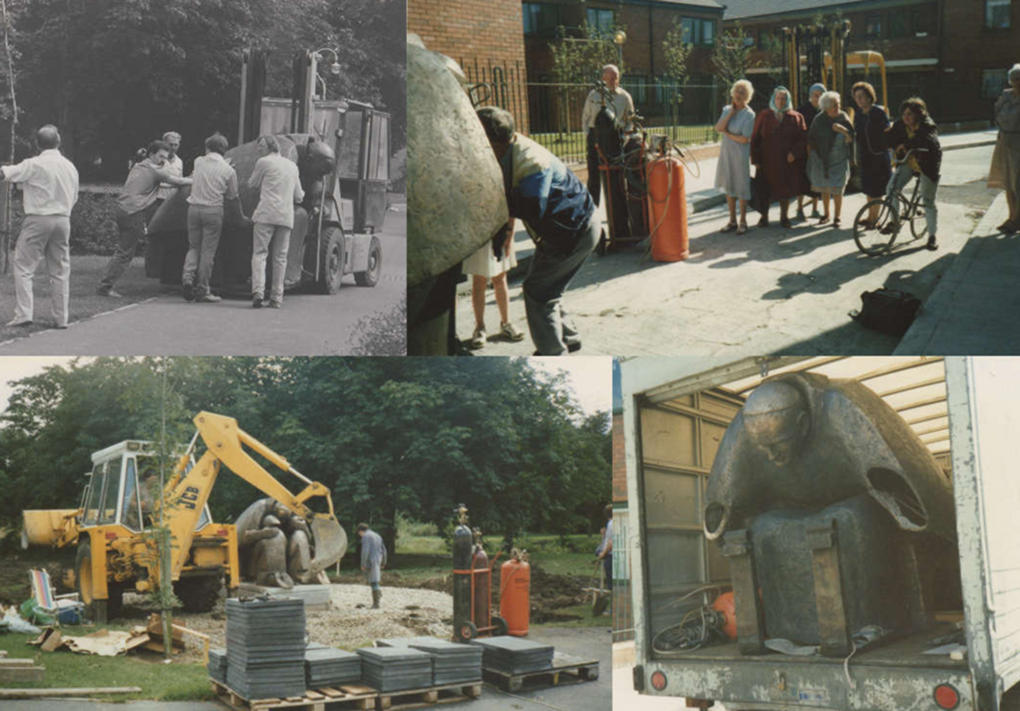
"I never intellectualise - the eyes and senses dictate to my hands directly."
"The pilgrim now stands on a site facing the new Maynooth library. It is not a pedestal but a low plinth, so that the Pope’s head is at eye-level and the work can be touched as well as seen.
"The group has a rather low and long outline and so has the library. They match one another very well, even though I had no knowledge of the building when I made the original small version. It is just another of the many little miracles that happened all during my work on the project."

